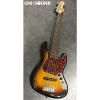Home>Products>Bass-guitars>Custom Moollon Classic J-V 2016 3 Tone Sunburst
Custom Moollon Classic J-V 2016 3 Tone Sunburst
- Bass Guitars,5-String or More,Moollon,
Custom Moollon Classic J-V 2016 3 Tone Sunburst
- one set
- 889USD
- Hardshell Case of Custom Moollon Classic J-V 2016 3 Tone Sunburst
- Within 3days after payment
- paypal,UnionPay, Visa/MasterCard, Amex, Discover,T/T
- 133
-
 Guitar Solo Shop2020-07-10 09:46:19
Welcome to my shop! Glad to serve you! Please send your question!
Guitar Solo Shop2020-07-10 09:46:19
Welcome to my shop! Glad to serve you! Please send your question!
Product Description
MOOLLON
J-Classic V
Street $2,290
Pros Beautiful, smooth sound; balanced B string; gorgeous fit and finish
Cons None
Bottom Line If there were such a thing as a Fender 5-string bass in 1963, this is what it would have looked and sounded like.
SPECS
Moollon J-Classic V
Construction Bolt-on
Body Alder
Fingerboard Makassar ebony
Radius 12”
Frets 20
Scale length 34”
Neck width at nut 45mm
String spacing 19mm
Pickups Moollon single-coil
Hardware Custom-designed steel bridge; Moollon vintage-spec tuners
Made in South Korea
Bass Player Magazine ReviewGIVEN FENDER’S PRIMAL ROLE IN THE BASS guitar’s origin and the company’s continued market dominance, it’s not surprising that many bass players have a conversant knowledge of its bass lineup and evolution over the years. Yet, while most of us are fairly Fender fluent, some are true Fender fetishists. And to this hardcore bunch, Korean luthier and engineer Young Joon is fast becoming a guru. His Fender-style instruments are designed to recall the key elements of basses that emerged during what some consider to be the brand’s bass zenith, the early-’60s “pre-CBS” era. This design mission is not unprecedented, but Young’s remarkable attention to detail perhaps is.
The Fender Jazz Bass is an especially common target for third-party pastiche. Indeed, there are several builders whose primary business revolves around hot-rodding the J-Bass formula in various ways. It isn’t that these builders lack creative spark; rather, the versatile, easy-playing Jazz Bass was such a successful design from the outset that demand for variations on its theme will always be high. Often, but not always, these souped-up J-style basses are infused with contemporary tech to give the instrument even more versatility and zing: active electronics, hum-cancelling pickups, exotic hardware, and more. Young, by contrast, is all about the passive vintage vibe. His Fender-style basses and guitars are all meticulously designed to authentically sound like their 50-year-old inspirations.
For the J-Classic V, Young’s challenge was compounded by the fact that Fender didn’t offer a Jazz Bass 5-string in the early ’60s. There was nothing for Young to copy—only formative design elements to evoke for a desired result. This made the J-Classic V an especially tricky challenge.
Delight In The Details
Before diving deep into the electronics and hardware, Young had a core formula that he knew was essential to capturing the vintage aesthetic. As with the earliest Fenders, the J-Classic sports a two-piece alder body and one-piece quartersawn maple neck. In contrast to a vintage bass, the Moollon has a Makassar ebony fingerboard, as opposed to Brazilian rosewood. Young made this change because ebony is more ethically harvested, and the supply of high-quality Brazilian rosewood is basically nil. He feels that the ebony fingerboard sounds nearly identical to a similarly equipped bass with rosewood. For fans of the classic ’70s Fender formula (ash body/maple fingerboard), Moollon has a bass in the works. Young also finished the Classic V with 20 ultra-thin layers of nitrocellulose lacquer, an uncommon finish in 2014 because it’s time consuming and often runs afoul of local environmental regulations. In fact, given these hurdles, Young is the only builder in Korea working with nitro finishes.
Perhaps the best clue as to Young’s truly obsessive mission is the J-Classic’s tuning machines. Whereas 99 percent of builders (my unofficial guess) use third-party hardware, Young makes his own tuners. This is rare not only because the influence of tuners on sound is not well investigated among luthiers, but also because the crowd that’s good with wood is not necessarily the same crowd that’s geared up for delicate machining. Young, however, has a degree in metal arts and sculpting, and is thus no stranger to metallurgy. After an expensive process of obtaining and testing pre-CBS Fender tuners, Young became convinced that early Fender tuners have some unique compositional characteristics that went missing in later models. Through analysis, Young determined the alloy of these early tuners and engineered exact duplicates. Particularly influential, says Young, is the early tuners’ high zinc content. Testing revealed that the old-spec tuners had improved sustain, low-end response, and evenness throughout the range compared to newer alloys. These advantages are particularly notable on 5-strings, where Young says the Moollon tuners integrate the B string with the rest of the instrument in a natural way.
While the tuner testing may reveal obsessiveness, Young says the pickup design was his biggest challenge. For a 4-string, recreating the 7kΩ resistance of a vintage Fender Jazz pickup is no big deal, but to achieve that spec with a 5-string pickup that also has the desired vintage-style timbre was no small feat: The increased winding length, magnet strength, and number of bobbins all upset the formula that made his 4-string pickups such a success. While not revealing his exact recipe, Young says that in the end, the coil composition and number of winds all result in an unorthodox cocktail of components that capture the essential sound he was after.
Dream Come True
I wish I could say I had a selection of vintage Fenders to compare the J-Classic to, but alas, professional bass players are usually priced out of the very tools we so desperately wish we had. Oh well. Nevertheless, I’ve spent quality time with some early-’60s Fenders (and around basses in general). The J-Classic V is one of if not the best vintage-Fender-style J-bass I’ve ever played. First, it’s beautifully assembled. It conveyed that palpable sense of experience and know-how that often mysteriously differentiates high-end basses from less-expensive alternatives. The neck felt wonderful and immediately familiar. The materials and finish gleamed with quality. The J-Classic’s playability was through the roof, and while a slightly heavy headstock produced some neck-dive, it was not a big deal. In short, the J-Classic is one of those instruments where the luthier nailed all the right little ingredients that combine to inspire a player to want to pick it up and go to work. It just fits.
The ergonomic harmony that characterized the bass’s feel was metaphorically identical to its sound. The instrument was incredibly even, from the taut and well-defined open B string all the way up to the highest registers. It easily conveyed all the classic J-style tones, from the woody soloed neck pickup to the punchy bridge-pickup sound, and to the slightly hollow, general-purpose blended tone. The tone knob revealed a host of tones throughout its range and in different pickup combinations. Most crucial to Young’s mission was that the Classic V sounded vintage. It’s a warm and rich-sounding bass, with a burnished and sophisticated midrange, round and supportive low end, and a smooth top. If you’re a slapper looking for sparkle and sizzle, though, this isn’t your bass (or, rather, it could be your bass, with an added external preamp). Like all passive basses, the J-Classic V is especially sensitive to the input impedance of whatever it’s plugged into, so for the best tone and high-frequency response, be sure your amp or DI offers something in the 1MΩ range or above.
If you’re a Fender fan with the dough, and you want the 5-string that Fender would have made in the early ’60s, this is the bass for you. And even if the Moollon’s Fender-ness is of no consequence to you, and you simply want a beautifully built and refined-sounding passive instrument, you’d be hard-pressed to find better.
GIVEN FENDER’S PRIMAL ROLE IN THE BASS guitar’s origin and the company’s continued market dominance, it’s not surprising that many bass players have a conversant knowledge of its bass lineup and evolution over the years. Yet, while most of us are fairly Fender fluent, some are true Fender fetishists. And to this hardcore bunch, Korean luthier and engineer Young Joon is fast becoming a guru. His Fender-style instruments are designed to recall the key elements of basses that emerged during what some consider to be the brand’s bass zenith, the early-’60s “pre-CBS” era. This design mission is not unprecedented, but Young’s remarkable attention to detail perhaps is.
The Fender Jazz Bass is an especially common target for third-party pastiche. Indeed, there are several builders whose primary business revolves around hot-rodding the J-Bass formula in various ways. It isn’t that these builders lack creative spark; rather, the versatile, easy-playing Jazz Bass was such a successful design from the outset that demand for variations on its theme will always be high. Often, but not always, these souped-up J-style basses are infused with contemporary tech to give the instrument even more versatility and zing: active electronics, hum-cancelling pickups, exotic hardware, and more. Young, by contrast, is all about the passive vintage vibe. His Fender-style basses and guitars are all meticulously designed to authentically sound like their 50-year-old inspirations.
For the J-Classic V, Young’s challenge was compounded by the fact that Fender didn’t offer a Jazz Bass 5-string in the early ’60s. There was nothing for Young to copy—only formative design elements to evoke for a desired result. This made the J-Classic V an especially tricky challenge.
Delight In The Details
Before diving deep into the electronics and hardware, Young had a core formula that he knew was essential to capturing the vintage aesthetic. As with the earliest Fenders, the J-Classic sports a two-piece alder body and one-piece quartersawn maple neck. In contrast to a vintage bass, the Moollon has a Makassar ebony fingerboard, as opposed to Brazilian rosewood. Young made this change because ebony is more ethically harvested, and the supply of high-quality Brazilian rosewood is basically nil. He feels that the ebony fingerboard sounds nearly identical to a similarly equipped bass with rosewood. For fans of the classic ’70s Fender formula (ash body/maple fingerboard), Moollon has a bass in the works. Young also finished the Classic V with 20 ultra-thin layers of nitrocellulose lacquer, an uncommon finish in 2014 because it’s time consuming and often runs afoul of local environmental regulations. In fact, given these hurdles, Young is the only builder in Korea working with nitro finishes.
Perhaps the best clue as to Young’s truly obsessive mission is the J-Classic’s tuning machines. Whereas 99 percent of builders (my unofficial guess) use third-party hardware, Young makes his own tuners. This is rare not only because the influence of tuners on sound is not well investigated among luthiers, but also because the crowd that’s good with wood is not necessarily the same crowd that’s geared up for delicate machining. Young, however, has a degree in metal arts and sculpting, and is thus no stranger to metallurgy. After an expensive process of obtaining and testing pre-CBS Fender tuners, Young became convinced that early Fender tuners have some unique compositional characteristics that went missing in later models. Through analysis, Young determined the alloy of these early tuners and engineered exact duplicates. Particularly influential, says Young, is the early tuners’ high zinc content. Testing revealed that the old-spec tuners had improved sustain, low-end response, and evenness throughout the range compared to newer alloys. These advantages are particularly notable on 5-strings, where Young says the Moollon tuners integrate the B string with the rest of the instrument in a natural way.
While the tuner testing may reveal obsessiveness, Young says the pickup design was his biggest challenge. For a 4-string, recreating the 7kΩ resistance of a vintage Fender Jazz pickup is no big deal, but to achieve that spec with a 5-string pickup that also has the desired vintage-style timbre was no small feat: The increased winding length, magnet strength, and number of bobbins all upset the formula that made his 4-string pickups such a success. While not revealing his exact recipe, Young says that in the end, the coil composition and number of winds all result in an unorthodox cocktail of components that capture the essential sound he was after.
Dream Come True
I wish I could say I had a selection of vintage Fenders to compare the J-Classic to, but alas, professional bass players are usually priced out of the very tools we so desperately wish we had. Oh well. Nevertheless, I’ve spent quality time with some early-’60s Fenders (and around basses in general). The J-Classic V is one of if not the best vintage-Fender-style J-bass I’ve ever played. First, it’s beautifully assembled. It conveyed that palpable sense of experience and know-how that often mysteriously differentiates high-end basses from less-expensive alternatives. The neck felt wonderful and immediately familiar. The materials and finish gleamed with quality. The J-Classic’s playability was through the roof, and while a slightly heavy headstock produced some neck-dive, it was not a big deal. In short, the J-Classic is one of those instruments where the luthier nailed all the right little ingredients that combine to inspire a player to want to pick it up and go to work. It just fits.
The ergonomic harmony that characterized the bass’s feel was metaphorically identical to its sound. The instrument was incredibly even, from the taut and well-defined open B string all the way up to the highest registers. It easily conveyed all the classic J-style tones, from the woody soloed neck pickup to the punchy bridge-pickup sound, and to the slightly hollow, general-purpose blended tone. The tone knob revealed a host of tones throughout its range and in different pickup combinations. Most crucial to Young’s mission was that the Classic V sounded vintage. It’s a warm and rich-sounding bass, with a burnished and sophisticated midrange, round and supportive low end, and a smooth top. If you’re a slapper looking for sparkle and sizzle, though, this isn’t your bass (or, rather, it could be your bass, with an added external preamp). Like all passive basses, the J-Classic V is especially sensitive to the input impedance of whatever it’s plugged into, so for the best tone and high-frequency response, be sure your amp or DI offers something in the 1MΩ range or above.
If you’re a Fender fan with the dough, and you want the 5-string that Fender would have made in the early ’60s, this is the bass for you. And even if the Moollon’s Fender-ness is of no consequence to you, and you simply want a beautifully built and refined-sounding passive instrument, you’d be hard-pressed to find better.
Product Specs
-
Condition:Brand New
Make:Moollon
Model:Classic J-V
Finish:3 Tone Sunburst
Categories:5-String or More
Year:2016
Made In:Korea, Republic of
Contact Us

- Guitar Solo Shop
- AddressShan Dong Province,China
- Phone(Working Time)86-13305315989
Related News
| Martin Guitars: The Perfect Blend of Tradition and Innovation |
| The Perfect Fit: Martin's Short Scale Acoustic Guitar for Players of All Sizes |
| Vintage Treasure: The Story of the 1946 Martin Guitar |
Product Categories
- Acoustic-electric guitar
- Acoustic guitars
- Band-and-orchestra
- Bass-guitars
- Folk-instruments
- Keyboards-and-synths
- Ibanez
- Left handed acoustic guitar
- Fender
- Custom Martin Acoustic Guitar
- Electric guitar beginner kits
- Guitar&Bass Accessories
- Solid body electric guitars
- Steel-string Acoustic Guitars
- Acoustic Guitar Beginner Kits
- Martin Guitar
- Double Neck Guitars
- Fender Guitar
- Godin Guitar
- BC RICH Guitar
- Music Man Guitar
- Steinberger
- Washburn Guitar
- PRS Guitar
- Schecter Guitar
- Rickenbacker Guitar
- Mayones Guitar
- Grestch Guitar
- Hofner Guitar
- Jackson Guitar
- EVH Guitar
- ESP Guitar
- Cort Guitar
- Charvel Guitar
- 12 string Guitar
- Harp
- Bass Guitar
- Line 6
- Marshall
- Electro-Harmonix
New Products
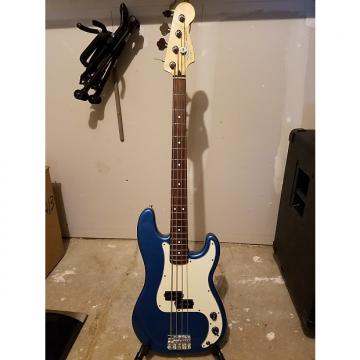 Custom Fender 92' Precision Bass P-Bass 1992 Blue
Custom Fender 92' Precision Bass P-Bass 1992 Blue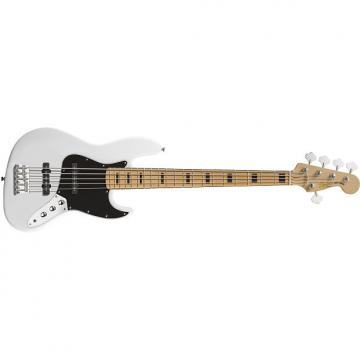 Custom Used Vintage Modified Jazz Bass® V Olympic White
Custom Used Vintage Modified Jazz Bass® V Olympic White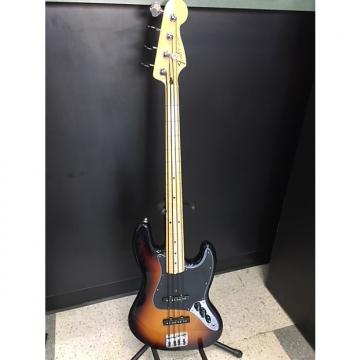 Custom Fender Standard Jazz Bass 2011 Sunburst w/ Maple Neck
Custom Fender Standard Jazz Bass 2011 Sunburst w/ Maple Neck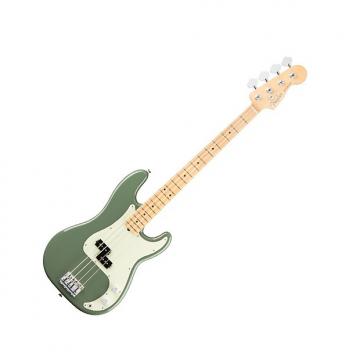 Custom Fender American Professional Precision Bass Maple Neck 2017 Antique Olive
Custom Fender American Professional Precision Bass Maple Neck 2017 Antique Olive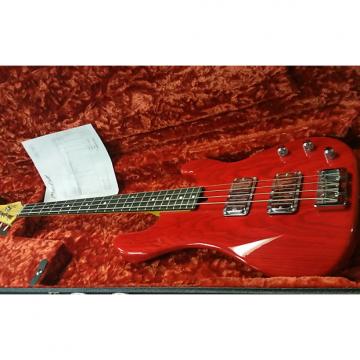 Custom Mike Lull P body with Thunderbird Lull pickups trans red
Custom Mike Lull P body with Thunderbird Lull pickups trans red

